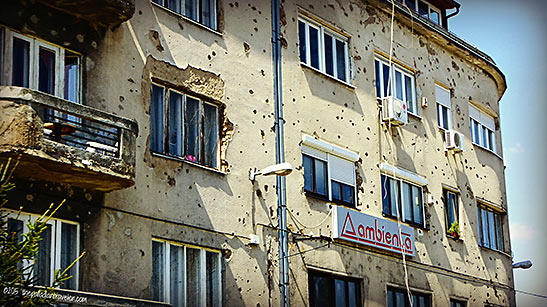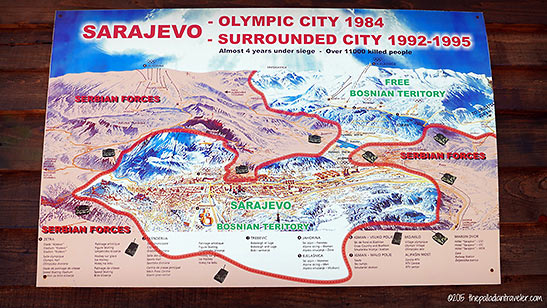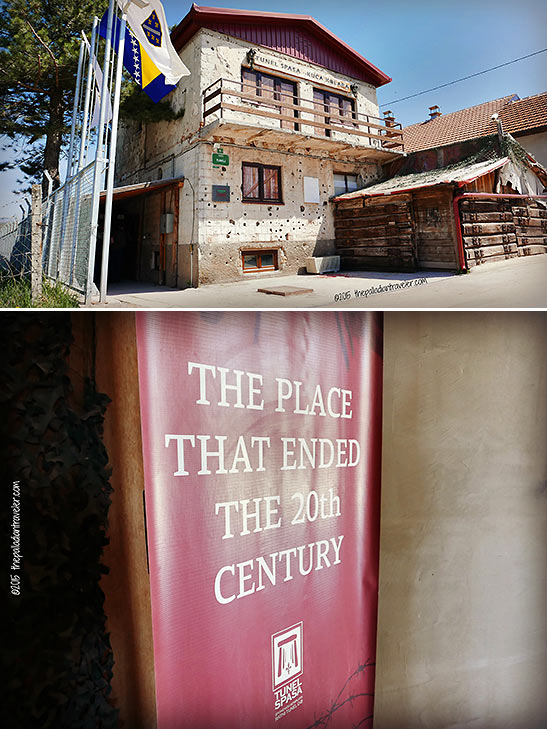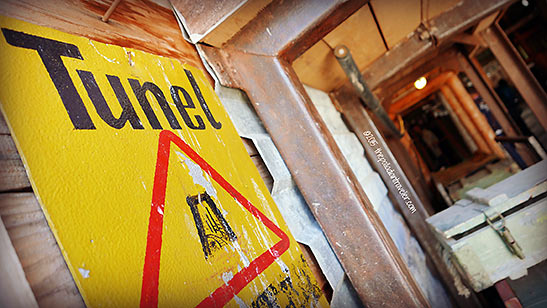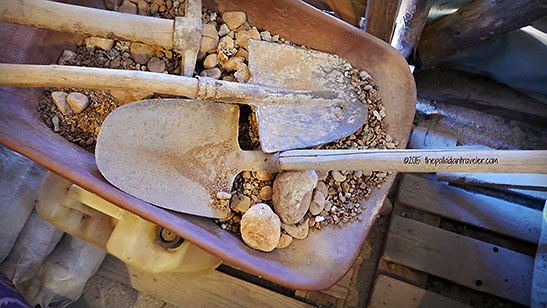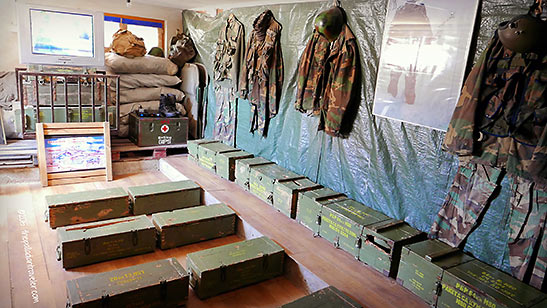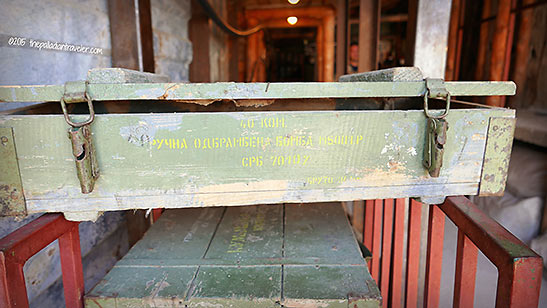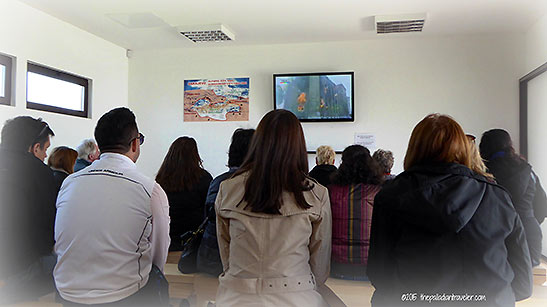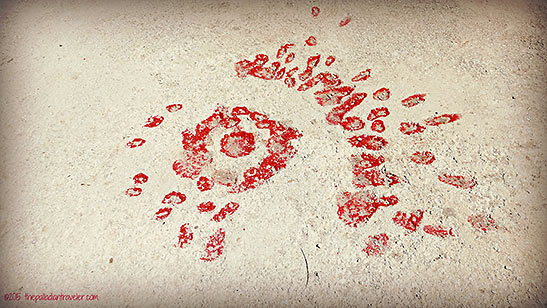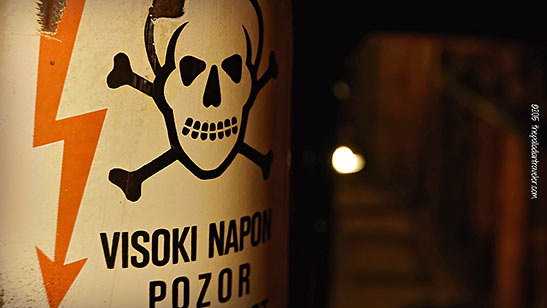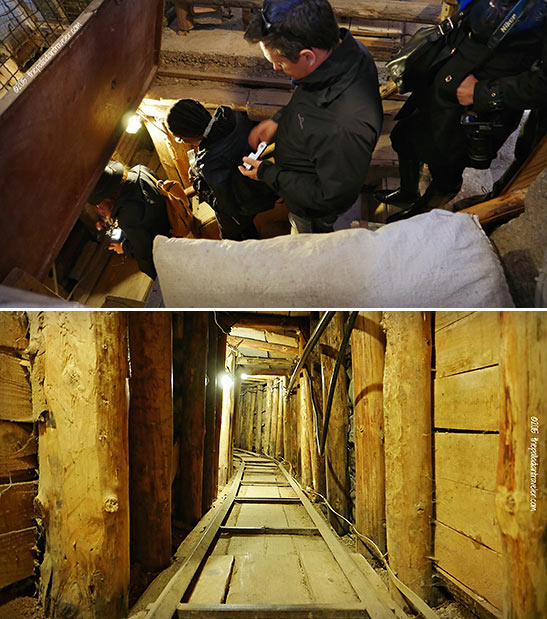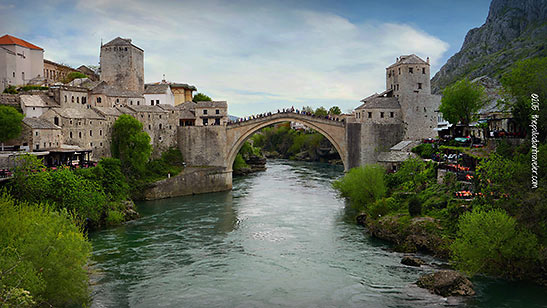 |
 |
|
 |

|
Destination Bosnia:
Inside Sarajevo's Tunnel of Hope (Dispatch #7) Story and photos by Tom Weber
Today, I'm part of an 18-person contingent of travel writers and photographers seated inside a sleek, comfortable Insight Vacations' (Insight) motor coach that's rolling down that same infamous thoroughfare as we cut across the capital city of Bosnia. The only difference, we're doing the shooting, with our cameras, as we zoom in on occupied buildings still riddled by rifle and mortar fire that stand as stark reminders of what life was like along Sarajevo's Ulica Zmaja od Bosne (Dragon of Bosnia Street).
Located in the suburb of Butmir, the Tunnel of Hope Museum, butted up against Sarajevo International Airport on the grounds of the modest, bullet-scarred home of the Kolar family, is dedicated to the memory of "the place that ended the 20th century." Just outside the embattled area, the Kolar home was used as one of the tunnel's two entry/exit points.
"Everything came through this tunnel: food, electricity, telephone lines, fuel, military equipment, medicines and the wounded," comments Dino, Insight's Sarajevo expert. "Without the tunnel," Dino adds, "Sarajevo would not have survived."
Dug by pickaxes and shovels, the Tunnel of Hope – codenamed "Objekt BD" for the entry/exit points at Butmir and Dobrinja – took six months to secretly construct and became the only connection embattled Sarajevo had with the outside world.
The 800-meter-long stretch, painstakingly carved out from underneath the then United Nations-controlled runway, is a claustrophobic 1.5m high by 1m wide corridor and was the only safe land route in and out of the city during the Siege.
One of the most frequently visited museums in and around the Bosnian capital, the Tunnel of Hope complex is a living history lesson of Sarajevo's recent past.
Draped with oversized maps detailing the war zone, the Spartan-like complex showcases military uniforms, weapons, humanitarian aid, hand tools used during the excavation, and several screening rooms to view an 18-minute highlight reel of television news and documentary footage of the Siege and the construction of the tunnel.
Not to be overlooked is a lone Sarajevo rose, a floral arrangement-like concrete scar caused by an enemy mortar shell's explosion that was later filled with red resin.
The most important exhibit of the museum is the tunnel itself, or at least what's left of the original 800-meter-long passageway. Visitors up to the task can step down and walk, hunched over, through the remaining 20 meters of the tunnel.
Now, if you promise to watch your head, let's go down and have a look for ourselves.
For complete information on Insight's premium and luxury-escorted itineraries, including 113 journeys throughout Europe, just click HERE, or call toll free 1-888-680-1241, or contact your travel agent.
Join me back on the motor coach tomorrow at first light when our intrepid "band of merry media" heads for Mostar to watch a few daredevil divers take a "leap of faith" off the iconic Stari Most. Vidimo se uskoro! (See you soon!) Related Articles:
|
|
Feedback for Destination Bosnia: Inside Sarajevo's Tunnel of Hope Spent time in Sarajevo in the fall of 1973…beer was excellent! --- David * * * * Hi Tom, I must say, you're photographs are always amazing. They are top notch. You bring so much class to Traveling Boy. It's photographs like yours that make me want to go out and do my own traveling. Please don't get tired of sending us your amazing adventures. It's such a delight for the soul. --- Raoul, Whittier, CA * * * * Hi Tom: --- David * * * * Hey Tom – Wow! Love those photos – they are so super that they make me A) Want to start eating NOW. B) Go there myself. C) See all that pristine beauty that looks so restful and peaceful. Great story, superb pix!!! Bravo!! --- John, Los Angeles, CA * * * * Feedback for Destination Southwestern France: Saint-Émilion Good job, Tom, and timely info. St. Émilion is in the list of places Jim Hayes and I will visit in September 2014. If we get the chance, we will exploit your experience to enhance the trip! --- Bobby Harper, Dameron, MD * * * * Feedback for Vicenza Walks – Monte Berico I lived in Vicenza for 4 years in the U.S. ARMY from 1963 to 1967. A wonderful place to explore. Palladio’s works are amazing. Have been back twice since and find new places to visit. My favorite is MONTE BERICO where I have some wonderful photos of my family. --- Dr. Albert Pizzi, Hanover, MA * * * * I liked the new TB particularly the Vicenza article that took me back as a youth when we lived in Naples and travelled up there for a baseball tourney (U.S. Military Bases dependent schools played each other.) Took me back to the plaza. --- Bill Feedback for A Canterbury Trail (Sutri) Very interesting note. I have wedroned which route the early pre-Christian and Christian pilgrims travelled to Rome from England. Is it still possible to travel the Francigena trail? --- Pawel You can find out more info on walking tours of Via Francigena at this site: http://www.compagniadeicammini.it/en/. Thanks for stopping by and commenting.. Tom * * * * Good article, enjoyed reading it. Saved your recommended sights for future use. --- Dardenne Prairie, MO * * * * You're going to be great at this Tom. Congrats. --- Donna Vissa -Montreal
|
This site is designed and maintained by WYNK Marketing. Send all technical issues to: support@wynkmarketing.com

|






